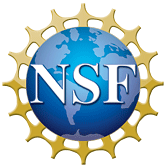Colloquium Abstract - Wenger - 2025Mar28
March 28, 2025
11:00am Mountain
Trey Wenger (U Wisconsin)
Astrophysics with Bayesian Spectral Models
Abstract
Radio spectroscopy, both continuum and spectral line, reveal the physical conditions and kinematics of the emitting material. For example, observations of the 21-cm hyperfine transition of neutral hydrogen (HI) in emission and absorption constrain the column density and excitation temperature (spin temperature) of the neutral interstellar medium (ISM). Traditional inverse modeling techniques, whereby these physical conditions are estimated from the parameters of a spectral decomposition, suffer from numerous biases and problems, including assumptions about the optical depth, complications due to radiative transfer effects like self-absorption, and, notably, the degenerate nature of Gaussian decomposition. I will introduce a new Bayesian spectral modeling framework (bayes_spec) and I will demonstrate how probabilistic forward models overcome the challenges associated with inverse models with specific applications to 21-cm emission/absorption, hyperfine spectroscopy, and radio polarization observations. In particular, I will highlight the accuracy of the 21-cm model in recovering the physical conditions of a multi-phase neutral ISM based on realistic synthetic observations. Finally, I will showcase how this model might reveal interesting physics in recent 21-cm emission/absorption data. Probabilistic spectral models will enable robust astrophysical inference in both the Milky Way and the nearby Universe in the ngVLA and SKA era..
Local Host: Preshanth Jagannathan




Connect with NRAO